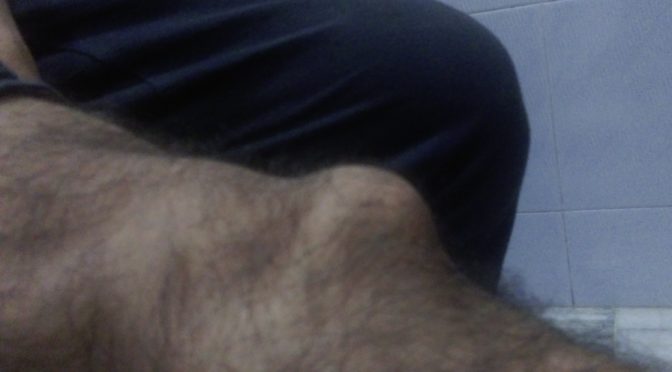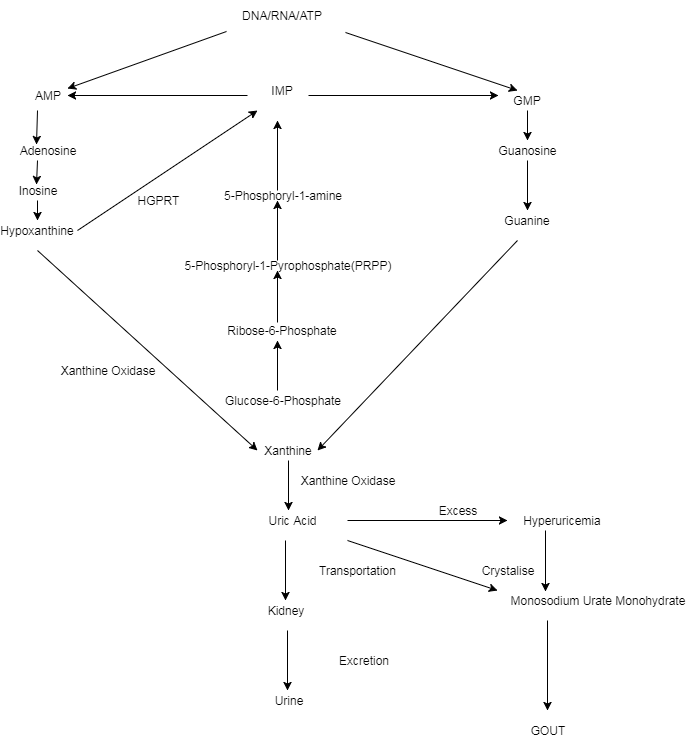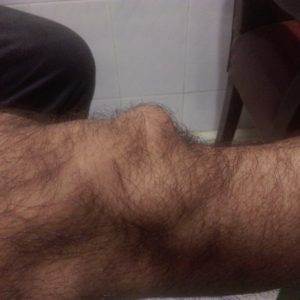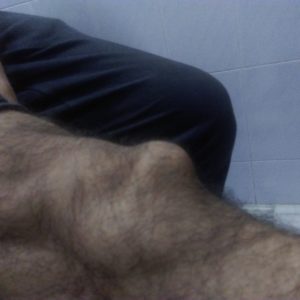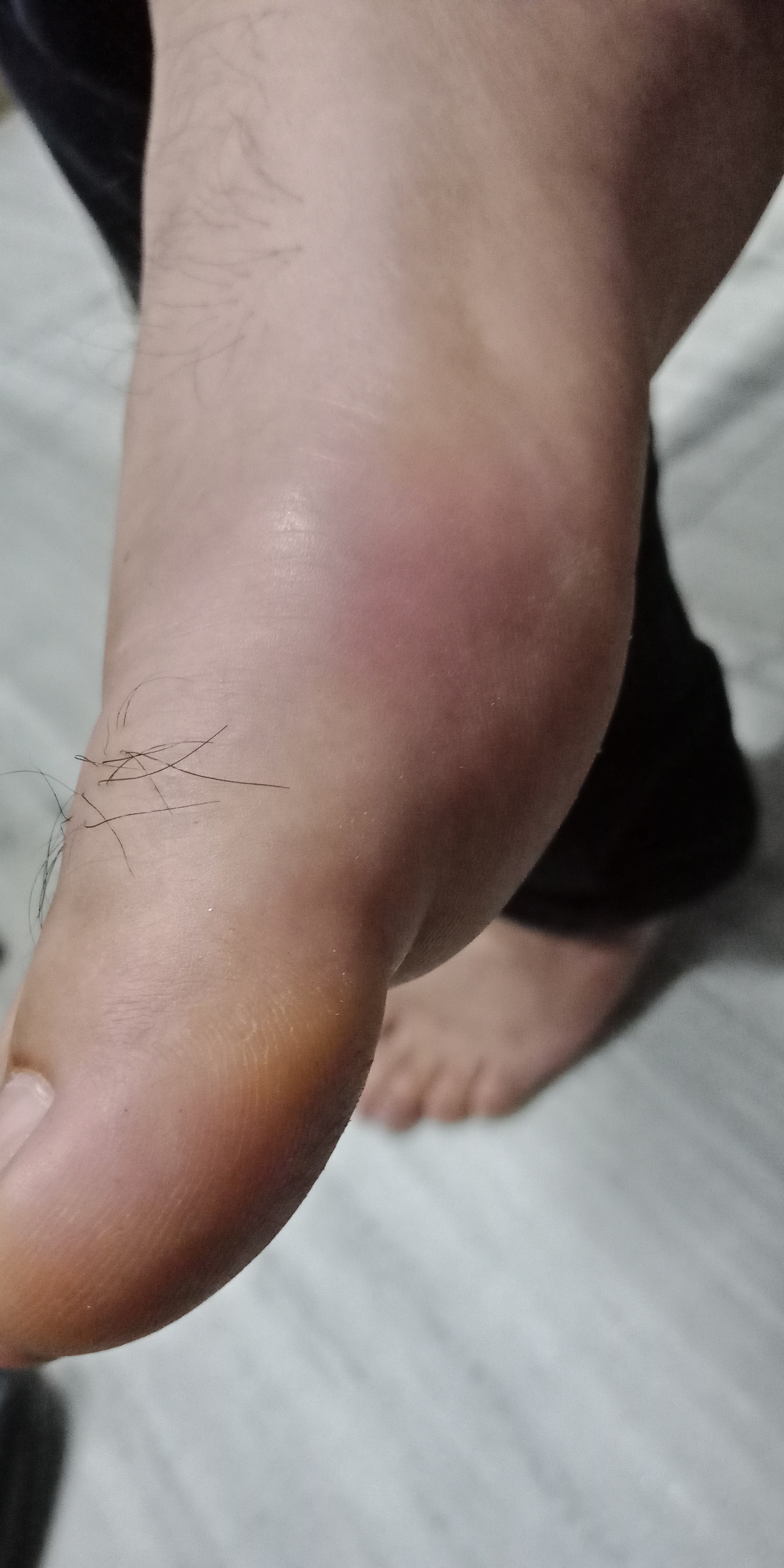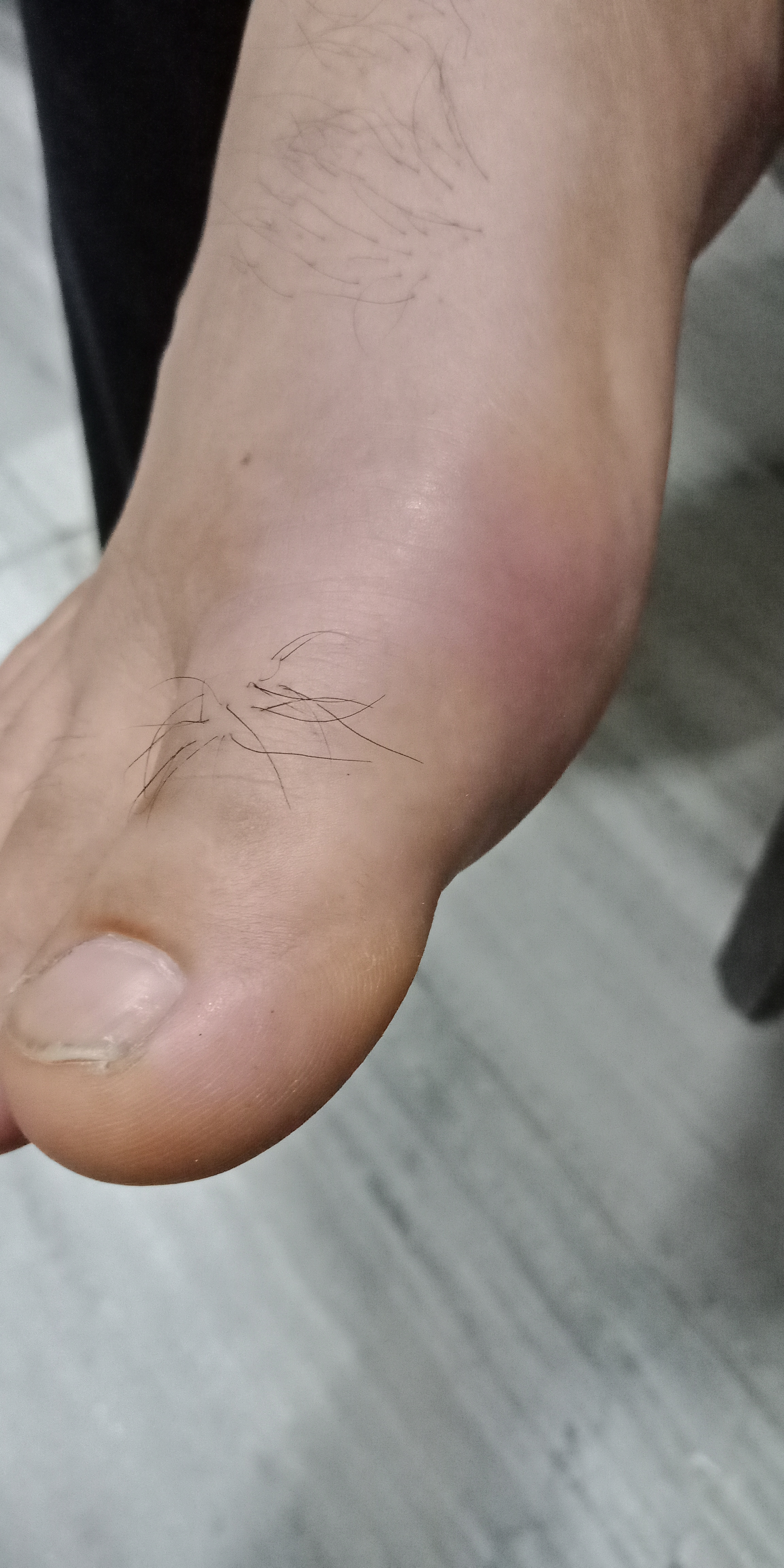Hypothyroidism is insufficiency of thyroid hormone required for normal growth and functioning of the body.
THYROID HORMONE AND ITS PHYSIOLOGY
Thyroid Hormones are produced in body only by thyroid glands , its a butterfly shaped glands situated in neck each lobe on either side of trachea connected with isthemus on midline behind hyoid bone.
T3 or tri-iodothyronine or liothyronine and T4 or thyroxine are active thyroid hormones partially composed of Iodine, so iodine is required for production of T3 and T4.
Hypothalamus releases Thyrotropin Releasing Hormone(TRH) which stimulates Pitutary glands to secret Thyroid Stimulating Hormone(TSH) which stimulates thyroid glands to produce thyroglobulin which is precursor of thyroid hormones, the residue of thyroglobulin is protien tyrosin which undergoes iodination with help of thyroperoxidase forming thyroid hormone.(1 molecule of thyroglobulin has 100-120 residual tyrosin of which only 20 undergoes iodination with help of thyroperoxidase in follicular colloid and rusultant formation of upto 10 thyroid hormone molecule from 1 thyroglobulin molecule.)Hypothalamo-pitutary-thyroid axis regulates levels of thyroid hormone in blood, increased level of T3 and T4 inhibibits TSH and TRH. Thus regulating proper balance of blood level of thyroid hormone.
T4 is converted into T3 with help of Deiodinases , these Deiodinases are Selenium based compounds, So sufficient selenium is required for production of T3 , its then converted into T1a (iodothyronamine)and T0a (thyronamine) by decarboxylation and deiodination.
In blood almost 99.97% thyroxine is bound to Thyroxine binding globulin only free thyroxine is biologically active.
Thyroid hormones helps in protien, fat and carbohydrate metabolism and stimulates vitamin metabolism. It is essential for proper development and differentiation of cells, it influences almost each and every cell bt binding with thyroid hormone receptor on neucleus of cells and it activates gene to express cell specific protiens to neucleus of the body and on cell membrane it attaches to integrin αvβ3 stimulating sodium-hydrogen anti-porter and activating processes like cell growth and formation of blood vessels. it also helps in maturation of neurons and bone growth, it promotes catecholeamines sensitivity.
Regulation of thyroid hormone levels is influenced by many different physiological and pathological stimulus.
HYPOTHYROIDISM MAY BE CAUSED DUE TO
- Defective Thyroid Gland itself , functioning inadequately, its called Primary Hypothyroidism. It is caused due to Iodine Deficiency, autoimmune Thyroiditis like Hashimato’s Thyroiditis where auto antibodies are driven against Thyroglobulin, Thyroxine peroxidase, TSH receptors which infilterate thyroid glands, post partum thyroiditis, subacute lymphocytic thyroiditis, subacute granulomatous thyroiditis, certain medications , radio-iodine procedure, thyroidectomy.
- Lack of sufficient stimulus by Thyroid stimulating Hormone (TSH), which is secreted from pitutary glands, it is called Secondary Hypothyroidism.
- Inadequate Thyroid Releasing Hormone(TRH), which is secreted from Hypothalamus, its called Tertiary Hypothyroidism.
A person can suffer from one or above all three types of causes of hypothyroidism.
Central Hypothyroidism, any hypothyroidism which can be classified under Secondary or Tertiary cause is termed as Central Hypothyroidism, their causes are any lesions compressing the pitutary, injury to pitutarty due to surger or other reasons , pitutary irradiation, certain drugs influencing pitutary, vascular disorders affecting pitutary, intracranial heamorrhages, certain autoimmune diseases like lymphocytic hypophysitis, certain infiltrative diseases, infection and congenital disorders.
SIGNS AND SYMPTOMS OF HYPOTHYROIDISM
- Fatigue , patient gets tired easily, frequently complaints of aching sensation in limbs and very occasionaly complaints of sensation of trembling of limbs
- Somnolence, sleepy feeling throughout the day and Insomnia, cant get proper sleep at night
- Weakness and lethargy, pt complaints of general weakness and lack of interest to do any physical activity.
- Coldness, cold feet and hands , slightly lower body temperature, cant tolerate cold climate.
- Dry thick and coarse skin
- Hoarseness in voice
- Tendency to catch cold easily
- Lack of concerntration and weak memory
- Depression, lack of interest , gloomy and melancholic.
- Delayed cycles with initial heavy flow and later very scanty flow.
- Oedematous swelling of limbs and face
- Myxedema
- Hearing deteriorates
- Slow Pulse Rate
- Carpel Tunnel Syndrome
- Delayed Tendon Relaxation Reflexes.
DIAGNOSIS OF HYPOTHYROIDISM
Blood test
T4 and TSH levels helps diagnose the condition
- Low T4 and elevated TSH suggests Hypothyroidism
- Low T4 and normal/low TSH suggests Hypothyroidism of central origin.
- Normal T4 and elevated TSH suggests Subclinical Hypothyroidism.
T3 levels are just extra parameter and should not be considered primary parameter, according to current guidelines T4 and TSH levels are considered first and T3 is used for extra guidance.
In many cases, patient shows signs and symptoms of hypothyroidism but their FT3 FT4 and TSH levels are absolutely normal in such cases antithyroglobulin and anti TPO antibodies test should be done to rule out Hashimoto’s Thyroiditis.
HOMEOPATHIC MEDICINES FOR HYPOTHYROIDISM
Based on symptoms and condition.
THYROIDINUM
Thyroidinum is a polcrest remedy with a wide sphere of action. Thyroidinum is a sarcode prepared from dried thyroid gland of the sheep or calf. It influences all the other systems of the body. Thyroidinum is used to treat various symptoms of hypothyroidism. Hypothyroidism is usually causex due to deficiency of tbyroid hormone. Patient usually presents with general and muscular weakness, easy fatigue, mood changes, obesity, digestive disturbances. Tendency for obesity. Very good remedy for menstrual disorders like menorrhagia, metrorrhagia, amenorrhoea. Arrested mental and physical development. Fatigue, marked weakness, poor concentration.
IODIUM
Iodum is generally known as iodine, a non metallic trace element required by our body. Iodine has multiple functions in our body. Deficiency of iodine in human body leads to several symptoms. Iodum is a very useful remedy in case of thyroid disorders. Patient usually presents with dry skin, hair loss,, feeble muscles, puffed up face and swollen tbyroid glands. Mental and physical lethargy, weight gain. Severe exhaustion and fatigue. Ravenous hunger, eats well yet losses flesh all the time. Anxiety with increased palpitations. Great debility, slightest effort endures perspiration.
CALCAREA CARBONICA
Calcarea carb is usually suited to fair, fat, flabby persons who are always chilly and cannot tolerate cold air. Calcarea carb is Very well indicated in hypothyroidism. Excessive sweatinv on head is a leading symptom for its use in hypothyroidism patients. Feels overworked or exhausted. Forgetful, confused, misplaced and expresses herself wrongly. Women with hypothyroidism have too early, too profuse menses with vertigo. Recomended in obese patients. Pecularities in eating like craving for boiled egg. Desire for indigestible things. Presents with constipation, first part of stool hard followed by soft stools.
BROMIUM
Bromium is a deep acting remdy indicated in case of Hypothyroidism. Suited to people with flax hair, light blue eyes, fajr individuals. Tendency to cause induration and enlargement of glands. Patient is very anxious, apprehensive with great depression of spirits. Glandular swelling, stony hardnesd of glands. All glands are affected thyroid, parotid, submaxillary, ublingual etc. The thyroid gland may bulge at one side and may be so hard as to restrict the movement. Presents with emaciation, general weakness and perspiration. Limbs are weak and tremble with growing prostration. Presents with chronic fatigue syndrome. Another important symptom of bromium is its indication of respiratory ailments especially in asthama in sailors as they go ashore.
SELENIUM
Selenium is one of the indicated remedy in case of hypothyroidism. Presents with marked mental and physical weakness.Great fatigue from which he seems unable to recuperate from rest. Sudden weakness in hot weather. Dry hacking cough with weak feeling in chet. Weak spine as if paralysed. He is sleepless till midnight, awakens early and always at the same hour. Severe hairfall. Constipation with inactivity of rectum.
APOCYANUM CANABINUM
Apocyanum cannabinum is an efficient remedy in case of hypothyroidism. Useful in dropsies. General dropsies with or without disease. Swelling of every part of body. Presents with great weakness. Low spirited, nervous. The skin feels husky and rough. Great proatration. Presents with great oppression about epigatrium with difficult breathing. Gasping for breath. In females metrorrhagia with paroxysmal flow.
BUFO RANA
Bufo is usually suited to feeble minded children and prematurely senile people. Bufo is a deep acting antisporic remedy. Main sphere of action is on glands, skin, CNS, mind. Useful in hypothyroidism. Patient is usually sad , restless, feeble minded, idiotic childish, impatient child. Inclination to bite. Presents with marked swelling of body. In female the menses are too early and too copious with clots. Weak memory, desires solitude.

